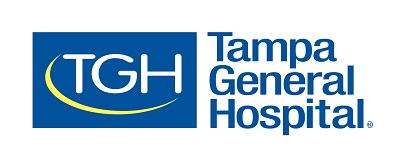.jpg) Amid a growing uninsured population, CMS is set to begin auditing hospitals’ uncompensated care reports this fall. Hospitals’ lifelines will be proper patient-level documentation and clearly defined charity care policies.
Amid a growing uninsured population, CMS is set to begin auditing hospitals’ uncompensated care reports this fall. Hospitals’ lifelines will be proper patient-level documentation and clearly defined charity care policies.
Hospitals are required to report their uncompensated care costs in a section of the Medicare cost report called the S-10 worksheet, which CMS uses to calculate DSH payments.
Last month, we highlighted steps 1 and 2 of the five-step checklist that healthcare organizations should keep  top of mind when allocating costs within Medicare rules. Step One advised healthcare organizations that their policy should establish clear, non-discriminatory income levels that constitute charity care. Step Two recommended healthcare organizations implement the policies and processes needed to ensure they are capturing and accurately recording the level of patient data required to optimize reimbursement and mitigate fraud risk.
top of mind when allocating costs within Medicare rules. Step One advised healthcare organizations that their policy should establish clear, non-discriminatory income levels that constitute charity care. Step Two recommended healthcare organizations implement the policies and processes needed to ensure they are capturing and accurately recording the level of patient data required to optimize reimbursement and mitigate fraud risk.
 top of mind when allocating costs within Medicare rules. Step One advised healthcare organizations that their policy should establish clear, non-discriminatory income levels that constitute charity care. Step Two recommended healthcare organizations implement the policies and processes needed to ensure they are capturing and accurately recording the level of patient data required to optimize reimbursement and mitigate fraud risk.
top of mind when allocating costs within Medicare rules. Step One advised healthcare organizations that their policy should establish clear, non-discriminatory income levels that constitute charity care. Step Two recommended healthcare organizations implement the policies and processes needed to ensure they are capturing and accurately recording the level of patient data required to optimize reimbursement and mitigate fraud risk.Below are the last 3 steps to optimize reimbursement and revenue, while mitigating heightened false claims risk.
Step 3: Quicken Electronic Health Record (EHR) Adoption
Have you taken the steps to fully transition to EHRs, and do you have a digital transformation plan in motion? To maintain patient documentation so that it’s accurate and ready in case of an audit, EHR adoption is key. Improving your organization’s documentation process involves digitally transforming the business. Part of that transformation includes making sure EHR implementation is up to speed to allow seamless and comprehensive data sharing.
How can you accelerate implementation? To improve interoperability and patients’ access to health information, CMS has streamlined EHR incentive programs—now called the Promoting Interoperability (PI) Program—to reduce the time and cost for hospitals to adopt, implement and upgrade their EHR technology. Historically, there have been challenges with EHR adoption and implementation due to lack of a streamlined standard or process for vendors, but healthcare organizations can improve their level of standardization, and receive payments for doing so, by following these steps:
• Adopt 2015 Edition Certified EHR Technology
• Collaborate with EHR vendors to promote uniform standards or implementation and adoption
• Participate in standards development process
Accelerating EHR implementation allows seamless and comprehensive data sharing, which in turn facilitates documentation and reduces the risk of false claims.
Step 4: Top-Down Training & Education
Do you have the organizational infrastructure in place to lead these changes from the top down? Changes or clarifications to charity care policies, patient-level documentation and EHR adoption begin with behavioral change from the top down. Only then will the new processes become an integrated and inherent part of the business. Employees must understand the reason for the change and what’s expected of them—and to do so, they need the proper resources and training from leadership.
To give employees the proper training:
• Consider compensation incentives that align with goals for appropriate documentation with fewer denials
• Offer training sessions on a regular basis covering regulatory and compliance updates to remind or teach employees about documentation requirements or changes
• Conduct regular S-10 form sampling and reviews prior to audits to actively guide better documentation in the future and allow for the immediate correction of errors
• Engage an external team with expertise in documentation and reduction of false claims to ease the burden of leadership and staff
• Conduct internal annual risk assessments and chart documentation audits, with feedback sessions and actions plans to follow to correct identified deficiencies
Step 5: Incorporate uncompensated care changes into ASC 606 Planning
Have you incorporated uncompensated care reporting changes—and potential revenue shortfalls—into your planning for ASC 606, or Revenue from Contracts with Customers? For hospitals, the third step of the standard—determining transaction price—is especially challenging. Revenues under value-based arrangements are considered a variable consideration because the reimbursements may be subject to retroactive adjustment after the fact. Under ASC 606, revenue to be recognized is limited to the amount of variable consideration where it’s probable that a significant adjustment will not occur when the uncertainties are resolved. Determining the transaction price, therefore requires providers to have visibility into the costs and quality of other providers or partners within their own supply chain to make a reasonable assessment.
As hospitals are unable to predict the likelihood of a CMS audit—or the odds of CMS taking back reimbursement previously booked as revenue—they’ll need to incorporate uncompensated care into their variable considerations.
Hospitals will continue to face financial and compliance challenges from all sides—especially as value-based reimbursement quickens. To manage this risk, they’ll need to monitor not only their own care outcomes and financial performance, but also the performance of other hospitals and subsequently released guidance.




























